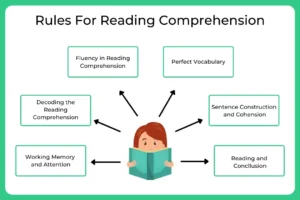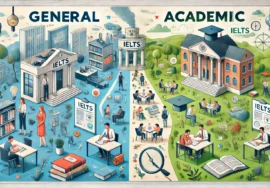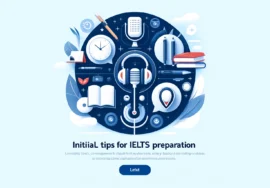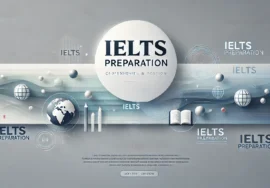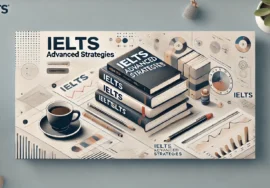
Read Faster & Comprehend More: Mastering Your IELTS Reading Skills
Discover effective strategies to boost your IELTS Reading skills. Learn speed reading techniques, comprehension strategies, and vocabulary-building tips to excel in the test and improve your overall reading performance.
Read Faster & Comprehend More: Mastering Your IELTS Reading Skills
The IELTS Reading test is not just about answering questions; it’s a timed challenge that demands both speed and understanding. With long, intricate passages and tricky questions, it’s easy to feel overwhelmed. However, enhancing your reading skills doesn’t require superhuman powers. With structured practice and the right techniques, you can improve both your speed and comprehension, giving yourself a significant advantage in this critical section of the test.
Speed Reading Techniques: Accelerate Your Reading
The first step to excelling in IELTS Reading is improving your pace without sacrificing understanding.

Here are some proven strategies:
1. Expand Your Eye Span
Instead of processing text word by word, train your eyes to absorb groups of words at once. This chunking technique smoothens your reading flow and increases speed. To practice:
- Use a newspaper or a magazine with narrow columns of text.
- Try guiding your eyes across the page using your finger or a pen.
2. Minimize Subvocalization
Do you silently “say” words in your head as you read? This habit, known as subvocalization, can significantly slow you down. Reduce it by:
- Chewing gum while reading to distract your inner voice.
- Tracing words with a pointer or finger.
- Counting softly in the background to keep your mind from vocalizing.
3. Focus on Keywords
Not every word in a sentence carries equal weight. Keywords—usually nouns, verbs, and adjectives—serve as signposts to the main ideas. Skim for these to grasp the passage’s essence without getting bogged down in unnecessary details.
4. Use a Pointer
Guiding your eyes with a pen, finger, or even the cursor on your screen can help you stay focused. This simple trick prevents unnecessary re-reading, keeps your pace consistent, and reduces distractions.
Comprehension Strategies: Unlocking the Text’s Meaning
Speed alone won’t get you far if you fail to understand what you’re reading. Master these comprehension strategies to grasp every passage effectively:
1. Identify Main Ideas
Every paragraph usually has a central idea, often found in its topic sentence (typically the first or last sentence). Quickly identifying this can help you understand the structure and purpose of the passage.
2. Make Inferences
In IELTS Reading, not all answers are directly stated. Use contextual clues and your prior knowledge to read between the lines and uncover implied meanings.
3. Summarize Information
After reading a paragraph or section, pause and mentally summarize its key points. Rephrasing the content in your own words ensures deeper understanding and better retention.
Vocabulary Building: Expanding Your Word Power
A strong vocabulary is the backbone of good reading comprehension. Unfamiliar words can slow you down and cause confusion.

Here’s how to build your vocabulary efficiently:
1. Engage in Active Reading
When you come across a new word, don’t skip over it. Instead:
- Guess its meaning from the surrounding context.
- Highlight or underline the word and look it up later.
2. Leverage Word Lists and Flashcards
Create a dedicated list of IELTS-relevant vocabulary or use flashcard apps to review them regularly. Group words by themes, such as environment, technology, or education, to make learning more manageable.
3. Read Widely and Consistently
Expose yourself to diverse materials—news articles, academic journals, and novels. The more you read, the more familiar you’ll become with complex sentence structures and nuanced vocabulary.
Mastering the IELTS Reading Test: Tips for Success
Here are some additional tips to refine your preparation:
- Time Yourself: During practice sessions, use a timer to simulate real test conditions. Aim to complete each passage within 20 minutes.
- Skim Before You Read: Quickly glance over the passage to get an overview before diving into the details.
- Practice Different Question Types: From True/False/Not Given to matching headings, familiarize yourself with the various question formats to reduce hesitation during the test.
- Review Mistakes: After every practice session, analyze your errors. Identify patterns—are you struggling with inference questions or vocabulary-based ones? Target these weaknesses in future study sessions.
Overcoming Common Challenges in IELTS Reading

Preparing for the IELTS Reading test can feel overwhelming, but understanding and addressing common hurdles will make the journey smoother.
1. Managing Time Effectively
One of the biggest challenges is completing the test within the allotted time. Here’s how to manage it:
- Prioritize Questions: Start with easier questions to build confidence, then move on to more challenging ones.
- Use Skimming and Scanning: Skim for the main ideas and scan for specific details instead of reading every word.
- Set Mini-Deadlines: Allocate specific times for each passage and stick to them.
2. Tackling Unfamiliar Topics
IELTS passages cover a wide range of topics, from science and history to art and technology. To handle unfamiliar subjects:
- Stay Calm: Focus on understanding the structure and main ideas, even if the topic is new to you.
- Rely on Context: Use surrounding sentences to deduce the meaning of complex words or concepts.
3. Avoiding Misinterpretation
Questions can be tricky, with subtle differences in meaning. To minimize errors:
- Re-read Questions Carefully: Pay attention to keywords such as “always,” “never,” or “sometimes.”
- Cross-Check Answers: Revisit the passage to ensure your answer matches the question.
Using Practice Tests Effectively
Practice tests are invaluable for IELTS preparation, but their effectiveness depends on how you use them.
1. Simulate Real Test Conditions
To get the most out of practice tests:
- Time Yourself: Complete the test within the exact time limits to mimic exam pressure.
- Avoid Distractions: Create a quiet environment to stay focused.
2. Analyze Your Performance
After completing a test, spend time reviewing your answers:
- Understand Mistakes: Identify whether errors were due to time pressure, misinterpretation, or lack of knowledge.
- Track Progress: Keep a record of your scores to monitor improvement.
3. Focus on Weak Areas
Use your test analysis to focus on specific question types or topics you find challenging. For example:
- Struggling with True/False/Not Given questions? Practice identifying factual statements.
- Finding summary completion tough? Work on identifying keywords in the text.
The Role of Grammar in Reading Comprehension
Grammar plays a critical role in understanding complex sentences in IELTS Reading passages.
1. Sentence Structure
IELTS passages often include long, compound, or complex sentences. To break them down:
- Identify Clauses: Look for main and subordinate clauses.
- Spot Linking Words: Words like “however,” “therefore,” and “despite” signal important relationships.
2. Verb Tenses
Understanding verb tenses is essential for answering questions accurately, especially for detail-focused or summary tasks.
3. Pronoun Reference
Pronouns like “it,” “they,” and “this” refer to earlier parts of the text. Always track back to find what these pronouns represent.
Maintaining Focus During the Test
Staying focused for the entire reading test can be difficult. Here are tips to maintain concentration:
- Take Mini-Breaks: Pause briefly after each passage to reset your mind.
- Practice Mindfulness: If you feel distracted, take a deep breath and refocus on the task.
- Hydrate and Rest Beforehand: Proper rest and hydration ensure you’re mentally alert during the test.
The Importance of Previewing the Passage
Previewing the passage before diving into the questions can save time and help you approach the text strategically.
1. Understand the Structure
Most IELTS passages follow a logical structure with an introduction, body, and conclusion. Skimming through the headings and the first sentences of each paragraph can give you an idea of the overall flow.
2. Identify Key Features
Look for:
- Headings and Subheadings: They indicate the main topics of the sections.
- Numbers, Dates, and Names: These are often linked to specific questions.
- Italicized or Bold Words: Such text may highlight crucial terms or concepts.
Strategies for Different Question Types
Each IELTS Reading question type requires a unique approach. Here are tips for handling some of the most common ones:
1. True/False/Not Given
- Scan for Keywords: Locate keywords in the question and find their matches in the passage.
- Be Precise: If the statement is partially true or missing information, the answer might be “Not Given.”
2. Matching Headings
- Focus on Main Ideas: Read the first and last sentences of paragraphs to identify their themes.
- Eliminate Options: Cross out headings that don’t fit to narrow down the choices.
3. Fill-in-the-Blanks
- Understand the Context: Read the sentence carefully to predict the missing word before searching the passage.
- Pay Attention to Grammar: Ensure the word fits grammatically in the blank.
Dealing with Synonyms and Paraphrasing
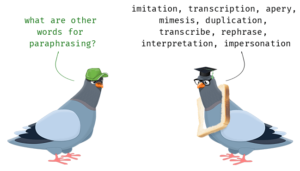
IELTS Reading often tests your ability to recognize synonyms and paraphrased sentences.
1. Expand Your Synonym List
Words in the questions are rarely repeated exactly in the passage. Familiarize yourself with common synonyms and phrases used in academic English.
2. Practice Paraphrasing
Identify sentences in reading materials and rewrite them in your own words. This will sharpen your ability to spot rephrased ideas during the test.
Enhancing Critical Thinking Skills
The IELTS Reading test often requires you to analyze and evaluate information critically.
1. Evaluate Arguments
Practice identifying the author’s stance, tone, and purpose. Ask yourself:
- Is the author presenting facts or opinions?
- Are they persuading or informing?
2. Recognize Bias
Some passages may include biased or one-sided arguments. Learn to differentiate between neutral and biased tones.
The Role of Background Knowledge
While IELTS Reading doesn’t require prior knowledge, having a basic understanding of common topics can make passages easier to comprehend.
1. Familiarize Yourself with Common Themes
Topics often include:
- Science and Technology: Innovations, discoveries, and their impact.
- History and Culture: Historical events, traditions, and societal changes.
- Environment: Conservation, climate change, and sustainability.
2. Read Beyond IELTS Materials
Explore news articles, academic essays, and reputable blogs related to these topics to build familiarity.
Staying Motivated Throughout Your Preparation
Consistent practice can feel tedious, but staying motivated is key to success.
1. Set Small Goals
Break your preparation into manageable tasks, such as completing one passage daily or mastering a specific question type each week.
2. Celebrate Milestones
Reward yourself after achieving key milestones, like improving your speed or understanding a difficult topic.
3. Join a Study Group
Collaborate with peers preparing for IELTS. Sharing tips and resources can keep the learning process engaging.
Conclusion: Practice, Perseverance, and Progress
Improving your reading speed and comprehension isn’t an overnight process. It requires consistent effort, a positive mindset, and a willingness to adapt. By incorporating these techniques into your preparation routine, you’ll not only excel in the IELTS Reading test but also develop a lifelong skill that benefits academic studies, professional pursuits, and beyond.
Start practicing today—every word you read brings you closer to your goal of IELTS success!

